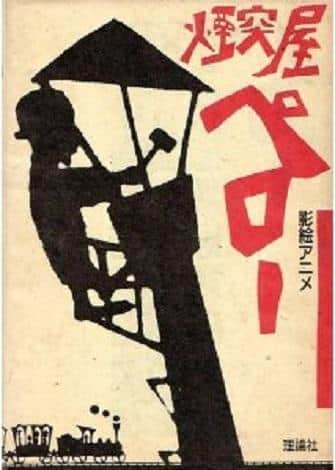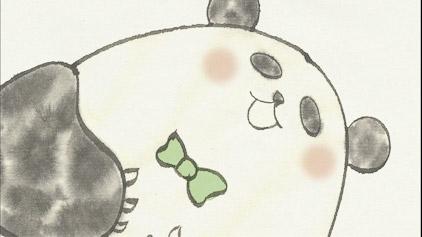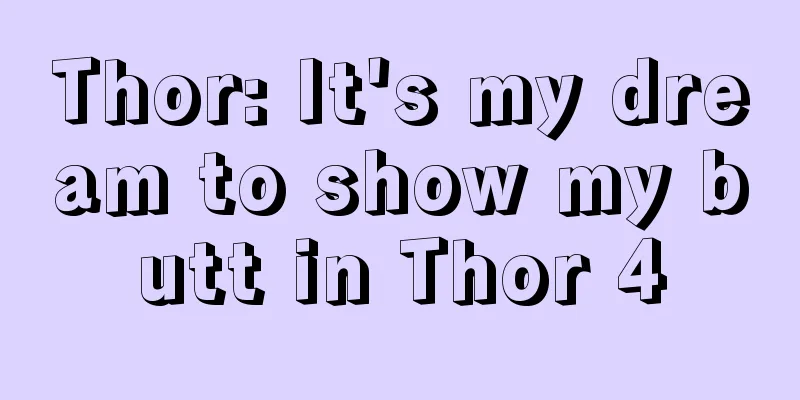The appeal and reputation of Perrault the Chimneyman: A unique worldview and depth of characters

"Chimney Man Perrault": A Desire for Peace in an Early Showa Animation■Overview of the workPerrault the Chimneyman is a Japanese animated film released in 1930 and produced by Doeisha. It was directed by Tanaka Kiji, who also wrote the original story. The film is a symbol of the development of animation in Japan in the early Showa period, and is known as a pioneering work that depicts the theme of war and peace. It was released in theaters, distributed by Fukada Shokai, has a total running time of 23 minutes, and has one episode. ■ StoryOne day, Perrault, a chimney maker in the country of Tom Tam, is given "eggs that produce soldiers" as a reward for saving a pigeon. When the train carrying the prince arrives at Tick-Tock, the largest city in the country, Perrault, out of curiosity, starts the train and breaks it. As a result, he is sentenced to death at a trial. On the day of his execution, Perrault is allowed to climb a chimney as a last glimpse into the world, and from there he sees enemy soldiers attacking. Perrault uses the eggs given to him by the pigeons to fight the enemies and save the country of Tom Tam. On his way home after being forgiven, Perrault sees the scars of war with his own eyes and is shocked by the cruelty. He breaks the eggs and returns to the countryside, where he decides to plow the fields and live in peace. ■ExplanationJapanese animation began with "Tokobo Shin Gacho" (1914, Nikkatsu Mukojima) and "Tokobo Shin Gacho" (1914, Tenkatsu) by Kitayama Seitaro, Shimoyama Aofu, and Terauchi Junichi. In the early Showa period, American animations such as Mickey Mouse, Popeye, and Betty Boop became hits, and animation became more popular. In Kyoto, Masaoka Kenzo established Monpei Productions in Shimogamo (1926) and partnered with Shochiku to begin full-scale animation production. Following Masaoka's highly artistic manga, which excelled in shadow art, was "Doeisha" (established in 1929). In the early Showa period, social unrest caused by the Great Depression and the Great Depression, and the accompanying proletarian movement, swept the film world in the form of trend films. In addition, the overall improvement and spread of the cinematic environment from filming to screening and exhibition made it possible for even personal and civic perspectives to be conveyed in the film medium, and film grew into a medium that not only conveyed art and entertainment, but also ideological and civic messages. In the midst of this, "Doeisha" was organized by 10 amateurs, mainly students from Doshisha University (Tanaka Zenji, Nakano Takao, Funaki Shunichi, Shibata Isogorō, Asai Makio, Murakami Eiichi, etc.). Over the course of about four years, the company produced four short shadow animations and three live-action films, and even ran an independent screening organization called "Kodomo Cinema Kai," which screened the films in various places. In 1932 (Showa 7), the Doeisha members persuaded Osawa Yoshio of J.O. Studio to organize a manga department, and the company was dissolved after the main members joined the company. Doeisha's third work was the shadow animation "Perrault the Chimneyman" (1930), consisting of approximately 20,000 frames. Perrault, who came from the countryside to the city and works as a chimneyman, is sentenced to death for wrecking his beloved "train," but he leads his country to victory by using "soldier eggs," and is pardoned and even rewarded. He returns home in triumph to his mother, but on the way home, he sees rubble, corpses, and brand new gravestones from the train window, which is different from the rural scenery he once saw. He is burdened with the responsibility of using the "eggs" without being forced to do so at the time of his country's crisis. As the author says, "I didn't make this with war in mind. Rather than being anti-war, I made it from a desire for peace," this work is not about war in a concrete, external sense, but rather makes people recognize the seeds of war in the hearts of individuals. In an era of shifting toward civilization and technology, war is superimposed on the protagonist Perrault's process of self-realization and is sublimated into a more universal "desire for peace." In Tokyo, it was commissioned to be shown at a Prokino screening, and was considered an anti-war anime. In 1986, the film was discovered for the first time in 56 years at the home of a member of the Doeisha group. The last third of the film had been cut off and lost, but with the cooperation of Group TAC, a network of members committed to restoration, it was restored and completed in October 1987. ■ Main staff
■ Related works
■ Evaluation and impact"Perrault the Chimney" is highly acclaimed as an animation work from the early Showa period. It has been particularly noted for its depiction of the theme of war and peace, and has been praised as an anti-war animation. The story of the work has a universal message in that it makes people aware of the seeds of war in the hearts of individuals. It has also been praised for its technical aspect as a shadow puppet animation, and is an indicator of the technical level of the time. This work also demonstrated the possibility of amateur animation production through the activities of Doeisha. Members of Doeisha later joined J.O. Studio and became involved in animation production on an even larger scale. In that sense, "Perrault the Chimney" can be said to be a work that marks an important page in the history of Japanese animation. ■ Recommendation points"Perrot the Chimney" is an essential work for understanding the history of Japanese animation in the early Showa period. It is particularly highly acclaimed for its depiction of the themes of war and peace, and for its technical shadow animation, making it a must-see for modern anime fans. Furthermore, through the activities of Doeisha, it shows the potential for amateur animation production, making it an important work for understanding the social background and culture of the time. This film can also be viewed in a restored version, allowing you to appreciate the beauty and technical ingenuity of the film at the time. This is a film that I would especially recommend to anyone interested in the history and technology of animation, or the theme of war and peace. Also, watching it with your family would be a good opportunity to teach your children the importance of peace. ■How to watchRestored versions of Perrault the Chimney Man are available on DVD and online streaming services, and are occasionally shown at animated film screenings and events. This is a must-see, especially for anyone with an interest in animation history and technology. ■ Summary"Perrot the Chimneyman" is an essential work for understanding the history of Japanese animation in the early Showa period, and is highly acclaimed for its depiction of the theme of war and peace, as well as for its technical aspects as a shadow puppet animation. Through the activities of Doeisha, it also shows the possibility of amateur animation production, and is an important work for understanding the social background and culture of the time. It can also be viewed as a restored version, allowing you to appreciate the beauty and technical ingenuity of the film of the time. This is a work that I would especially recommend to those who are interested in the history and technology of animation, and those who are interested in the theme of war and peace. Also, watching it with your family would be a good opportunity to teach children the importance of peace. It is a work that I would definitely recommend you to see at least once. |
>>: My Baseball - A thorough analysis of the moving story of the pursuit of the hot ball of youth
Recommend
"The Cooking Master Boy!" Dudu appeared in full costume but still couldn't beat the delicious food
The new comic series of "The Cooking Master ...
My Hero Academia Season 5: A thorough review of a story of new challenges and growth
The appeal and evaluation of the fifth season of ...
Neighborhood Story: A masterpiece anime that depicts the warmth of everyday life and the depth of human relationships
The appeal and reviews of Gokinjo Monogatari The ...
Robotics;Notes Review: A moving story that combines science and youth
"Robotics;Notes": The appeal of a robot...
"Avatar 2: The Way of Water" new trailer and poster superb audio-visual experience
20th Century Fox released the official trailer an...
Disney and Sony reach movie deal, Spider-Man will be available on Disney+
According to a recent report by foreign media Var...
Animated film "Deep Sea" releases character posters and will be released on the first day of the Lunar New Year
The Chinese animated film "Deep Sea" re...
The Flash Standalone Movie to Be Directed by IT Director
According to Variety, Warner is in talks with And...
TV animation new series "MARS RED" confirmed to be broadcast in April 2021, starring Yamadera Koichi
The new TV animation "MARS RED" based o...
The sixth work of Reiwa Knight, "Kamen Rider GAVV", is announced and is expected to be broadcast in September
On July 1, the sixth special drama of Kamen Rider...
Guo Jingming's new poster of "The Yin-Yang Master: Dream of Eternity" released, the wizard and the princess gaze solemnly
Today (December 9), Onmyoji: The Yin Yang Master ...
The appeal and reviews of "Hakyuu Houshin Engi": A mythical adventure that anime fans must see
"Hakyu Hoshin Engi": A fusion of an a...
Irresponsible Science The reason why there are more right-handed people is related to how they speak
On May 22, a new episode of NICO's popular pr...
Hunter x Hunter confirmed to resume serialization on October 7 after nearly two years of hiatus
Not long ago, Mr. Togashi tweeted the original ma...
Shadowverse F Seven Shadows #3 Review: Deepening story and strategy appeal
Shadowverse F Seven Shadows #3 - Deepening story ...









